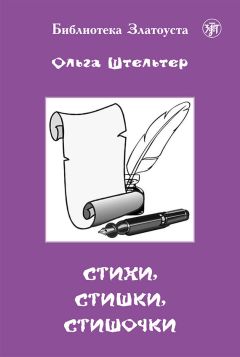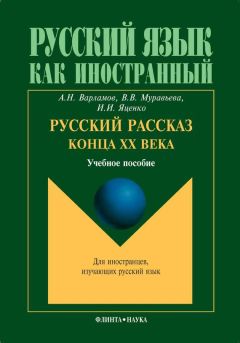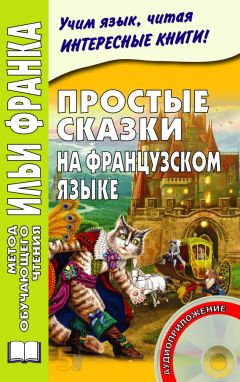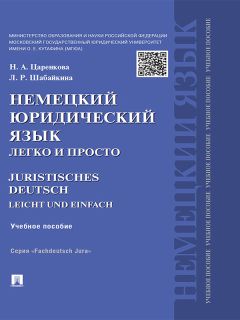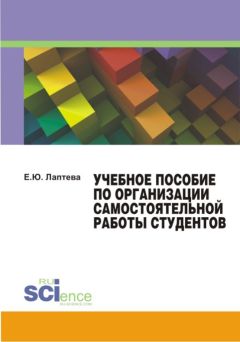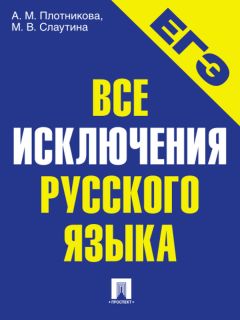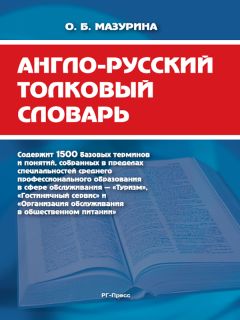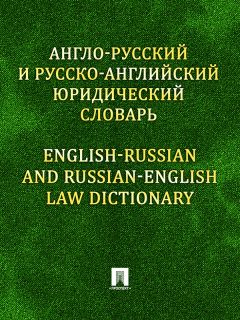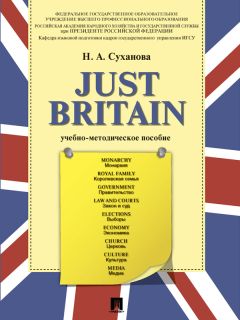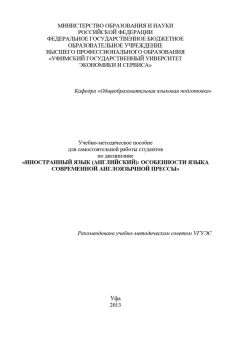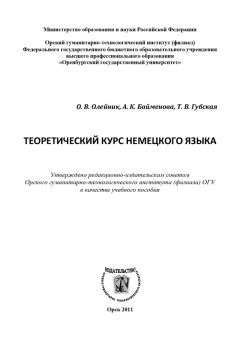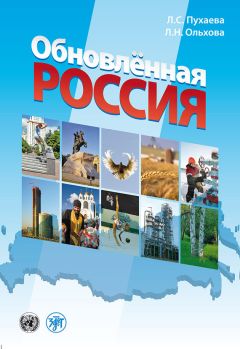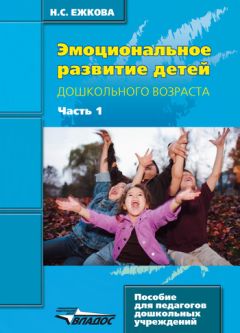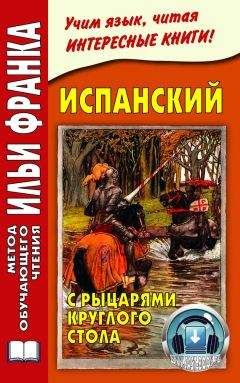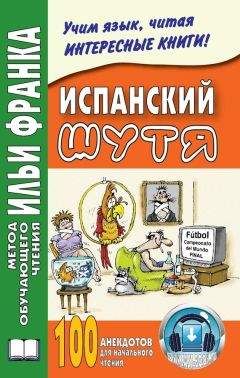Джамиля Махметова - Методическая разработка по английскому языку по специальности «Стандартизация, сертификация и метрология»
Все авторские права соблюдены. Напишите нам, если Вы не согласны.
Описание книги "Методическая разработка по английскому языку по специальности «Стандартизация, сертификация и метрология»"
Описание и краткое содержание "Методическая разработка по английскому языку по специальности «Стандартизация, сертификация и метрология»" читать бесплатно онлайн.
Данное учебно-методическое пособие предназначено для работы со студентами-бакалаврами и магистрантами, обучающимися по специальности «Стандартизация, сертификация и метрология». При подборе аутентичных текстов по данной специальности были использованы словарь терминов и слов общеупотребительной лексики, способствующей обогащению словарного запаса по важным аспектам специальности, а также кон-тролю умений и навыков по пройденному материалу.
The present teaching manual is designed for bachelor's and master's degree training on specialty «Standardization, Certification and Metrology».
When choosing the authentic texts on the subject a glossary of terms was used that contributes to enriching the vocabulary of the most important aspects of the field, as well as checking up habits and skills of the material studied within a definite period of time.
incandescent bulb – лампа накаливания – қыздыру шамы
range – диапазон – ауқым
temperature range – температурный диапазон – температуралық ауқым
International Practical Scale – Международная практическая шкала – Халықаралық тәжірибелік шкаласы
uniform – одинаковый – біркелкі, біртекті
fixed point – зафиксированная точка – анығына жеткен нүкте
state – состояние – күй
pure material – чистое вещество – таза зат
Standard Platinum Resistance – стандартный платиновый термометр сопротивления – стандартталған платиналы термометр кедергісі
to interpolate – интерполировать – интерполяциялау
temperature value – значение температуры – температура мәні
transfer standard – образцовая мера для передачи размера единицы с постоянного тока на переменный – тұрақты токты айнымалыға бірлік көлемін жіберудегі үлгілік өлшем
amount – количество – мөлшер сан
reading – показание измерительного прибора – өлшеуіш аспаптың көрсетуі
recreate – воссоздавать – қайта жасау, жаңғырту; қалпына келтіру
Ex. 1. Read and translate the text
The modern standards of some physical quantities
Standards are objects or ideas that are designated as b eing authoritative for some accepted reason. Whatever value they possess is useful for comparison to unknowns for the purpose of establishing or confirming an assigned value based on the standard. The design of this comparison process for measurements is metrology. The execution of measurement comparisons for the purpose of establishing the relationship between a standard and some other measuring device is calibration
Whatever value they possess is useful for comparison for the purpose of establishing or confirming an assigned value based on the standard. The design of this comparison process for measurements is metrology. The execution of measurement comparisons for the purpose of establishing the relationship between a standard and some other measuring device is calibration.
The ideal standard is independently reproducible without uncertainty. This is what the creators of the «meter» length standard were attempting to do in the 19th century when they defined a meter as one ten-millionth of the distance from the equator to one of the Earth’s poles. Later, it was learned that the Earth’s surface is an unreliable basis for a standard. The Earth is not spherical and it is constantly changing in shape. Careful calibrations allowed tolerances as small as 10 parts per million to be distributed and reproduced in metrology laboratories worldwide, regardless of whether the rest of the metric system was implemented and in spite of the shortfalls of the meter’s original basis. Currently, five independent units of measure are internationally recognized: temperature interval, linear distance, electrical current, frequency and mass. Any measurement can be based on one or more of these measurement units. To supplement these five, two units of angle measurement that are also independent are recognized. For example, Ohm's law is a widely known concept in electrical study. Of the three units of measure involved, only current (ampere) is an independent unit. Voltage and resistance units are dependent on current units, as defined by Ohm's law.
It is believed that each of independent units of measure will be defined in terms of the other four independent units eventually. Length (meter) and time (second) are already connected this way. If an accurate time base is available, then a length standard can be reproduced without a meter bar artifact, using the known constant speed of light. Lesser known is the relationship between the luminance (candela) and current (ampere). The candela is defined in terms of the watt, which in turn is derived from the ampere.
Non-commercial measurement details used to be academic curiosities. The development of standards follows the needs of technology. As a r esult, some units of measure have much more resolution than others. The second is reproducible to 1 part in 1014. As it became possible to measure time more precisely, solar time, believed to be a constant, proved to be very slightly irregular. This resulted in leap second adjustments to keep UTC (universal time coordinate) synchronized with solar time. The candela standard is difficult to recreate. An incandescent bulb design must be used as a secondary standard, a transfer standard. These special candela standard bulbs recreate the candela when a sp ecific amount of current is applied. Luminance (candela) can only be reproduced to 5 % of reading despite having sensors that have accuracies of +/– 50 parts per million (0.005 %) precision. This is due to the standard not being accurately reproducible.
Temperature (kelvin) is defined by agreed fixed points. These points are defined by the state changes of nearly pure materials, generally as they move from liquid to solid. Between these fixed points, Standard Platinum Resistance Thermometers (SPRTs) are used to interpolate temperature values. This mosaic of approaches produces measurement uncertainty which is not uniform over the entire range of temperature measurement. Temperature measurement is coordinated by the International Practical Temperature Scale, maintained by the BIPM.
Ex. 2. Answer the following questions
1. What was learned later about the Earth’s surface ?
2. How many unites of measure are internationally recognized currently ?
3. What is Standard Platinum Thermometer used for ?
4. What do special candela standard bulbs recreate ?
5. What are any measurements based on?
Ex. 3. Are these sentences true or false ?
1. Non-commercial measurement details were studied by scientists.
2. The candela standard is easy to recreate.
3. Voltage and resistance units are independent on current units.
4. Temperature (kelvin) is defined by non-defined fixed points.
5. Standard Platinum Resistance Thermometers (SPRTs) ar e used to interpolate voltage values.
6. Watt is derived from meter.
7. Ten independent units of measure are internationally recognized, currently.
Ex. 4. Fill the blanks using the following word words:
surface, poles, to define, reason, to attempt, length, to reproduce, metrology object.
Standard is an … oridea that can be used some accepted … Ideal standards can be … without uncertainty. The first ideal standard was … to create in the 19th century. It was connected with «meter» … standard. In the 19th century meter was … as one ten-millionth of the distance from the equator to one of the Earth’s … It was considered as the first ideal standard. Later it was learned that the Earth’s … an unreliable basis for a standard because the Earth could change its shape. Today there are carried out many calibration investigations w hich are widely used in … for establishing standards.
Ex. 5. Match the beginning with the endings based on the text
Ex. 6. Put the questions to the bold-typed words:
1. These bulbs recreate candela.
2. Luminance (candela) can only be reproduced to 5 %.
3. This organization coordinates temperature measurements.
4. Current is applied during the recreation of candela.
5. This mosaic of approaches produces measurement uncertainty.
Ex. 7. Make the summary of the text: «The modern standards of some physical quantities» using the following plan:
The definition of ideal standard.
The definition of Candela standard and Kelvin standard.
LESSON 6
requirement – требование – талап; бап; міндетті ереже
technical standards – нормативно-технические документы – дәстүрлі техникалық құжаттар
technical system – техническая система – техникалық жүйе
formal document – официальный документ – ресми құжат
criterion – критерий (pl. criteria) – критерий, белгі
practice – методика – әдіс, әдіс – тәсіл жиынтығы
certified reference standard – аттестованный стандартный образец, аттес-тованный эталонный образец – аттестацияланған стандартты үлгі
certified reference material – аттестованный стандартный образец материала – материалдың аттестациядан өткен стандартты үлгісі
reference base – база стандартов – стандарттар негізі
national standard – государственный стандарт – мемлекеттік стандарт
national standards body – орган по разработке государственных стандартов – мемлекеттік стандарттарды жете зерттейтін ұйым paper
trail – документальное свидетельствo – ( деректі ), құжаттық
regulatory body – орган управления – басқару органы
corporation – акционерная компания, корпорация – акционерлік серіктік, корпорация, бірлестік
military – армия – армия
mandatory – обязательный – мандаттық; міндетті
to adopt – принимать – қабылдау, қабылдап алу; үлгі алу, еліктеу
edict – указ – қаулы
standard specification – стандартные технические условия – стандартты техникалық шарттар
explicit – точный – ұқыпты, тиянақты; дәл тұра
set – набор – жинақ, жиынтық
procurement – закупка – толайым, сатып алу
precise – точный – тиянақты; шындық, дәл, тура
standard test method – метод стандартного испытания – стандартты әдіс сынағы
standard practice – стандартная методика, стандартная технология – стандартты әдіс, стандартты технология
technical practice – техническая норма – техникалық мөлшер
nuclear power plant – ядерная энергетическая установка – ядролы энергетикалық қондырғы
standard guide – указатель стандартов – стандарттар көрсеткіші
standard unite – стандартная единица измерения – стандартты өлшем бірлігі
options – дополнительная информация – қосымша мәлімет
specific course of action – определенные действия – белгілі әрекеттер
voluntary standard – рекомендательный (необязательный) стандарт – ұсыныс жасайтын (ерікті) стандарт
Ex. 1. Read and translate the text
Technical standards
A technical standard is an established norm or requirement in regard to technical systems. It is usually a formal document that establishes uniform engineering or technical criteria, methods, processes and practices. A technical standard can also be a controlled artifact or similar formal means used for calibration. Reference Standards and certified reference materials have an assigned value by direct comparison with a reference base. A p rimary standard is usually under the jurisdiction of a national standards body. Secondary, tertiary, check standards and standard materials may be used for reference in a metrology system. A key requirement in this case is (metrological) traceability, an unbroken paper trail of calibrations back to the primary standard.
A technical standard may be developed privately or unilaterally, for example by a corporation, regulatory body, military, etc. Standards can also be developed by groups such as trade unions, and trade associations. Standards organizations often have more diverse input and usually develop voluntary standards: these might become mandatory if adopted by a government, business contract, etc.
The standardization process may be by edict or may involve the formal consensus of technical experts.
The primary types of technical standards are:
– A standard specification is an explicit set of requirements for an item, material, component, system or service. It is often used to formalize the technical aspects of a procurement agreement or contract. For example, there may be a sp ecification for a turbine blade for a jet engine that defines the exact material and performance requirements.
– A standard test method describes a definitive procedure that produces a t est result. It may involve making a car eful personal observation or conducting a highly technical measurement. For example, a physical property of a material is often affected by the precise method of testing: any reference to the property should therefore reference the test method used.
– A standard practice or procedure gives a set of instructions for performing operations or functions. For example, there are detailed standard operating procedures for operation of a nuclear power plant.
– A standard guide is general information or options that do not require a specific course of action.
– A standard definition is formally established terminology.
– Standard units, in physics and applied mathematics, are commonly accepted measurements of physical quantities.
Ex. 2. Answer the following questions
1. What is technical standard?
2. What organizations can develop technical standards?
3. What is standard practice?
4. How do you understand standard test method?
5. What standard unites do you know?
Ex. 3. Are these sentences true or false?
1. A technical standard can also be a controlled means used for metrology.
2. A technical standard may be developed by government.
3. A primary standard is usually under the jurisdiction of the government.
4. A standard practice or procedure gives a set of instructions for performing operations or functions.
5. Standard guide gives only specific information about standards.
Подписывайтесь на наши страницы в социальных сетях.
Будьте в курсе последних книжных новинок, комментируйте, обсуждайте. Мы ждём Вас!
Похожие книги на "Методическая разработка по английскому языку по специальности «Стандартизация, сертификация и метрология»"
Книги похожие на "Методическая разработка по английскому языку по специальности «Стандартизация, сертификация и метрология»" читать онлайн или скачать бесплатно полные версии.
Мы рекомендуем Вам зарегистрироваться либо войти на сайт под своим именем.
Отзывы о "Джамиля Махметова - Методическая разработка по английскому языку по специальности «Стандартизация, сертификация и метрология»"
Отзывы читателей о книге "Методическая разработка по английскому языку по специальности «Стандартизация, сертификация и метрология»", комментарии и мнения людей о произведении.






